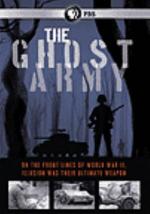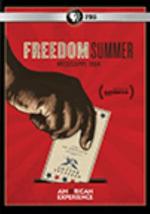June 1, 2016 | SuzyQ
The Ghost Army was officially known as the 23rd Headquarters Special Troops. From June 1944 to March 1945 it staged 20 battlefield deceptions, beginning in Normandy and ending at the Rhine River. These deceptions included an array of inflatables (tanks, trucks, jeeps, and airplanes), sound trucks, phony radio transmissions and even playacting to fool the enemy.
In the hot and deadly summer of 1964, the nation could not turn away from Mississippi. Over ten memorable weeks known as Freedom Summer, more than 700 student volunteers joined with organizers and local African Americans in a historic effort to shatter the foundations of white supremacy in one of the nation's most segregated states, even in the face of intimidation, physical violence, and death.
In 1948, the Soviet Union blocked access to West Berlin, starving the population and choking commerce. Allied forces refused to cede the city, and for nearly a year, supplied two million civilians and 20,000 allied solders entirely from the air. Through the personal stories of those who were there, this program provides a striking look at the first battle of the Cold War and the largest humanitarian campaign the world has ever seen.
On October 29, 1929 - Black Monday, large and small investors alike lost corporate and personal fortunes when the stock market crashed. This program examines the reasons behind the crash and whether the crash was predictable.
In 1943, Noor Inayat Khan was recruited as a covert operative into Winston Churchill's Special Operations Executive. With an American mother and Indian Muslim father, she was an extremely unusual British agent. After her network collapsed, Khan became the only surviving radio operator linking the British to the French Resistance in Paris, coordinating the airdrop of weapons and agents, and the rescue of downed Allied fliers. Betrayed, she was sent to Germany where she was executed at Dachau.
At the end of 1853, San Francisco was a city on the move. It had twelve daily newspapers, nine insurance companies, consulates of twenty-seven foreign governments, and six-story buildings where sand dunes once stood. A few years earlier, San Francisco was just a sleepy little town. But the sight of gold in the rushing waters of the American River sent a ripple around the world and set the stage for an event that would forever change a city, a fledgling state, and the nation. Incorporating rare and exquisite daguerreotypes and original recreations, this film offers a vivid portrait of a seminal event in American's history.
Story of Seabiscuit, the most popular thoroughbred horse during the Depression, focusing on the animal, trainer, owner, and jockeys.
In 1881, 25 men led by Lieutenant Adolphus Greely sailed from the harbor of St. John's, Newfoundland. Their destination was Lady Franklin Bay in the high Arctic, where they planned to collect a wealth of scientific data from a vast area of the world's surface that had been described by a British admiral as a 'sheer blank.' Three years later, only six survivors returned, with a daunting story of shipwreck, starvation, mutiny, and cannibalism.
Born in 1838, Queen Lili'uokalani was a talented composer who took the throne after her brother's death in 1891. She dealt with the U.S. government revoking her position on the sugar market, was overtaken by U.S. Marines, and lost her throne.
The compelling and dramatic story of the 1963 March on Washington, where Dr. Martin Luther King gave his stirring "I Have a Dream" speech. This watershed event in the Civil Rights Movement helped change the face of America. Recounts the events when 250,000 people came together to form the largest demonstration the young American democracy had ever seen.
The story behind the laying of the transatlantic cable. The physical challenges to laying the cable were enormous. The project would require the production of a 2,000 mile long cable that would have to be laid three miles beneath the Atlantic.
This film interweaves the personal accounts of polio survivors with the story of an ardent crusader who tirelessly fought on their behalf. Features interviews with historians, scientists, polio survivors, and the only surviving scientist from the core research team that developed the Salk vaccine, Julius Youngner.
In March 1931, two white women stepped from a box car in Paint Rock, Alabama to make a shocking accusation: they had been raped by nine black teenagers on the train. So began one of the most significant legal fights of the 20th century. The trial of the nine falsely accused teens would draw North and South into their sharpest conflict since the Civil War, yield two momentous Supreme Court decisions and give birth to the civil rights movement.
At the beginning of the 20th century, coal was the engine of American industrial progress. Nearly three quarters of a million men across the country spent ten or twelve hours a day underground in coal mines. The Mine Wars brings to life the struggle that turned the coalfields of southern West Virginia into a blood-soaked war zone where basic constitutional rights and freedoms were violently contested.
Tells the story of the 250,000 teenagers who left their homes and hopped freight trains during the Great Depression. Personal narratives of men and women from a variety of backgrounds reveal their experiences of leaving home during the Great Depression by jumping on freight trains. Includes archival footage of teenagers riding on top of speeding trains, newsreel interviews with these young riders, and clips from motion pictures of the day, providing a unique glimpse of the social conditions during this period of American history.
In the spring of 1918, an army private reported to a hospital in Kansas. He was diagnosed with the flu, an illness that doctors knew little about. By the end of WWI, America was ravaged by a flu epidemic that killed 675,000 people.
An up-close look at the most dangerous mission in the history of exploration. Recounts the triumphant first manned space flight. Interviews with Apollo 8 astronauts, mission control, and journalists.
On February 4, 1974, college student Patty Hearst (granddaughter of newspaper tycoon William Randolph Hearst), was kidnapped from her apartment by a terrorist group calling itself the Symbionese Liberation Army. The SLA, seeking to foment a violent uprising within America's working class, forced the Hearst family to donate millions of dollars in food to the poor. But two months after her kidnapping, Patty emerged in public as Tania, an armed member of the SLA who helped her captors to rob a bank. Contains rare and previously unseen archive footage as well as interviews with former SLA members to explain "America's first encounter with modern media-driven political terrorism.."



















